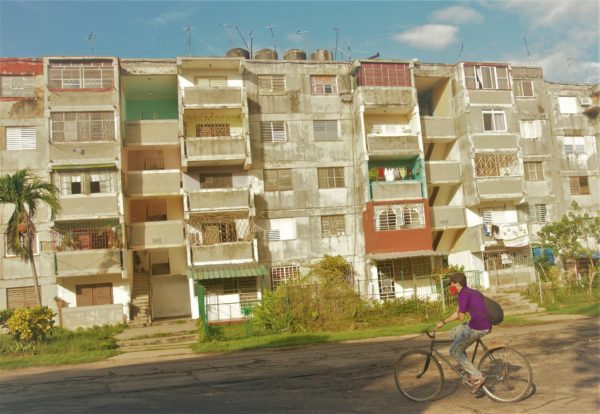The "it" is this: Greater prosperity led people to forsake the bicycles they had used for transportation and recreation in favor of automobiles. When it happened in the US, surviving bike manufacturers sold the public on the idea that a bicycle is a toy--or, that if it is indeed useful as transportation, it is suitable only for those who aren't old enough to drive. On the other hand, in England and the rest of Europe, adult cycling survived mainly as a recreational activity practiced by a slowly but steadily declining portion of the population.
In the US, England and continental Europe, those who switched from cycling to driving seemed, as often as not, to see the bicycle as a symbol of privation--or of those things which they had "grown past" or "grown beyond". This was particularly true for poor or working-class people who acquired the means to own a car: They simply would not dream of "going back". I believe that this is one reason why we see more bicycle disdainers among people who are, say, over 50 than among the young.
Similar phenomena have taken place in China and Cuba. In both countries, especially China, the bicycle was a, if not the, primary means of transportation-- particularly in cities. The leaders most identified with those two nations--Mao Tse-Tung and Fidel Castro--had much to do with turning people into cyclists. Both rulers saw the bicycle as a "people's" way of transportation, and the "Communist"* parties they led promoted it as such.
But while the numbers of bicycles and cyclists in China grew steadily from the time of the Revolution (1949) until the end of the century, Cuba experienced a surge in cycling during the 1990s. The Soviet Union, the island's chief benefactor, had just collapsed. In its wake, the supply of cheap petrol that had flowed to the Pearl of the Antilles dried up. So did the cash subsidies from Moscow, which meant that less was spent on public transportation and other infrastructure improvement.
And so did the supply of bicycles from the Soviet Bloc. Some people bought bikes from foreign tourists or other sources. It was at that time that the first bicycles were manufactured in Cuba: one model, called the Minerva. It left most people wishing for imports and black- or gray- market bikes: The Minerva was of "poor quality," according to Lazaro Pereira, a bicycle repair specialist in the city of Cardenas. "The forks split, and when this happened, passers-by would mock people falling off their bikes," he recalls.
I imagine that alone would have stopped some people from cycling. But in the early 2000s, the island began to recover from the loss of Soviet subsidies and cycles, and people abandoned two wheels in favor of four. Bicycles developed a "negative connotation...associated with the poverty that characterized this period," according to Naybis Diaz Labaut, the owner of VeloCuba, a repair and rental enterprise in Havana. She has seen "significant movement in the world of bicycles in Cuba" during the past five years or so, which has allowed her to open two shops.
All of the bikes she rents, or that her guides use on tours, were purchased from foreigners. Even with the increased interest in cycling, the bikes sold in Cuba are "Chinese models made of iron" and "of poor quality," she says. She believes that cycling "has a big future in Havana" even though it has yet to achieve the popularity it's regained in the provinces.
Still, one of the biggest challenges to the growth of cycling in Cuba, she says, is motorists--and not only because many of them won't get out of their cars and bike on their bikes. There is a "lack of motorist education," she explains: A generation of people has grown up without cycling, while some older motorists have been away from cycling for a long time.
That sounds like a problem we still have in the US and it won't change tomorrow, as several post-World War I generations didn't ride bikes as adults, or at all. At least the Cubans have lost only a decade or so rather than a generation.











